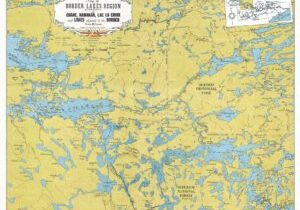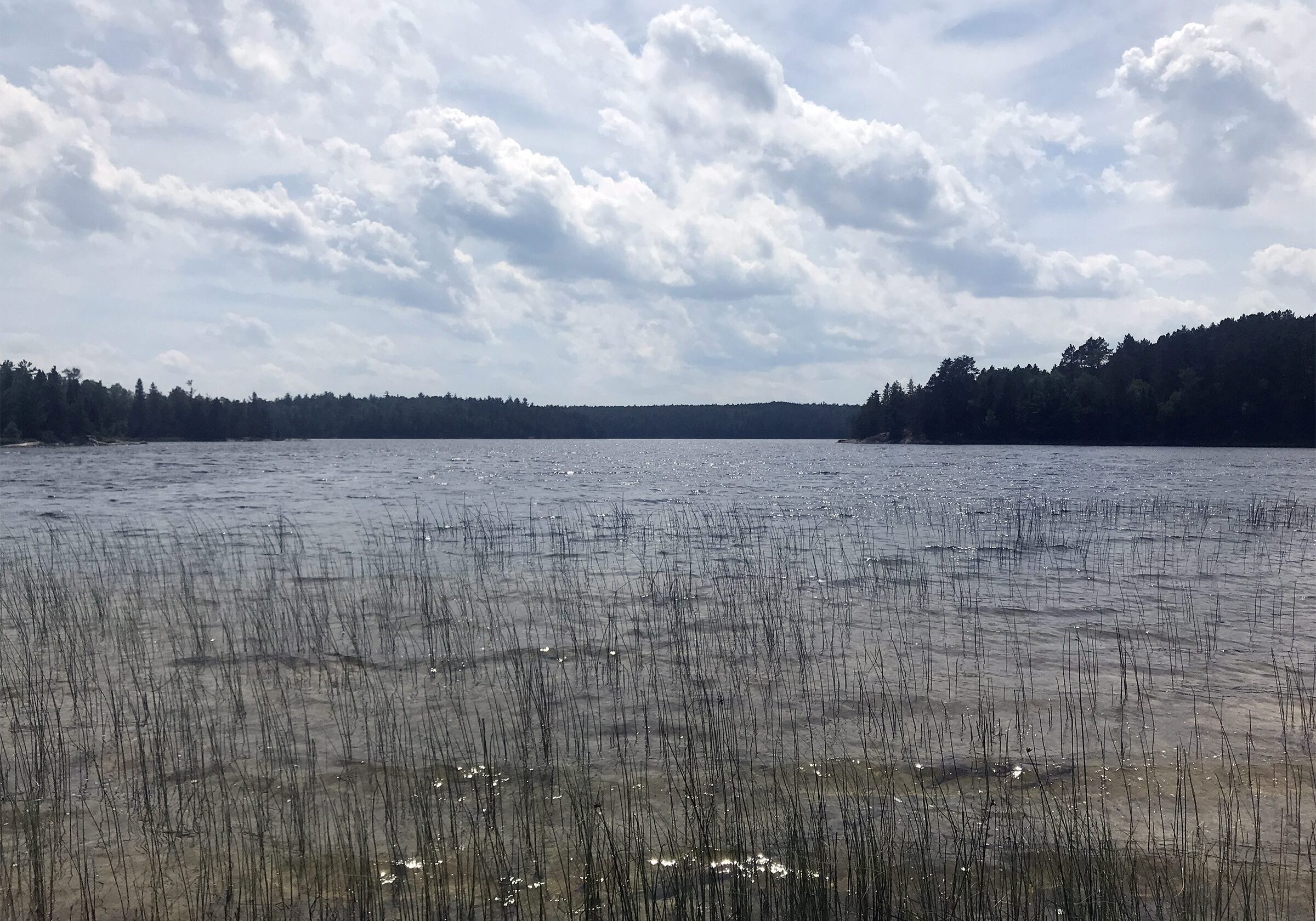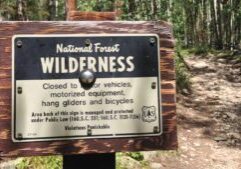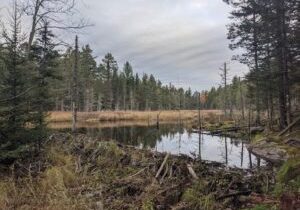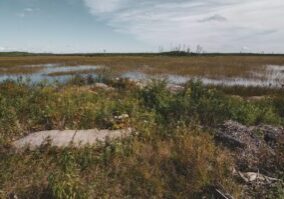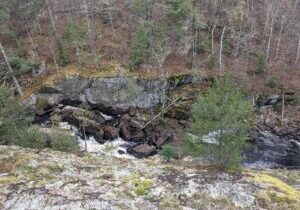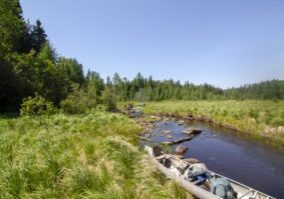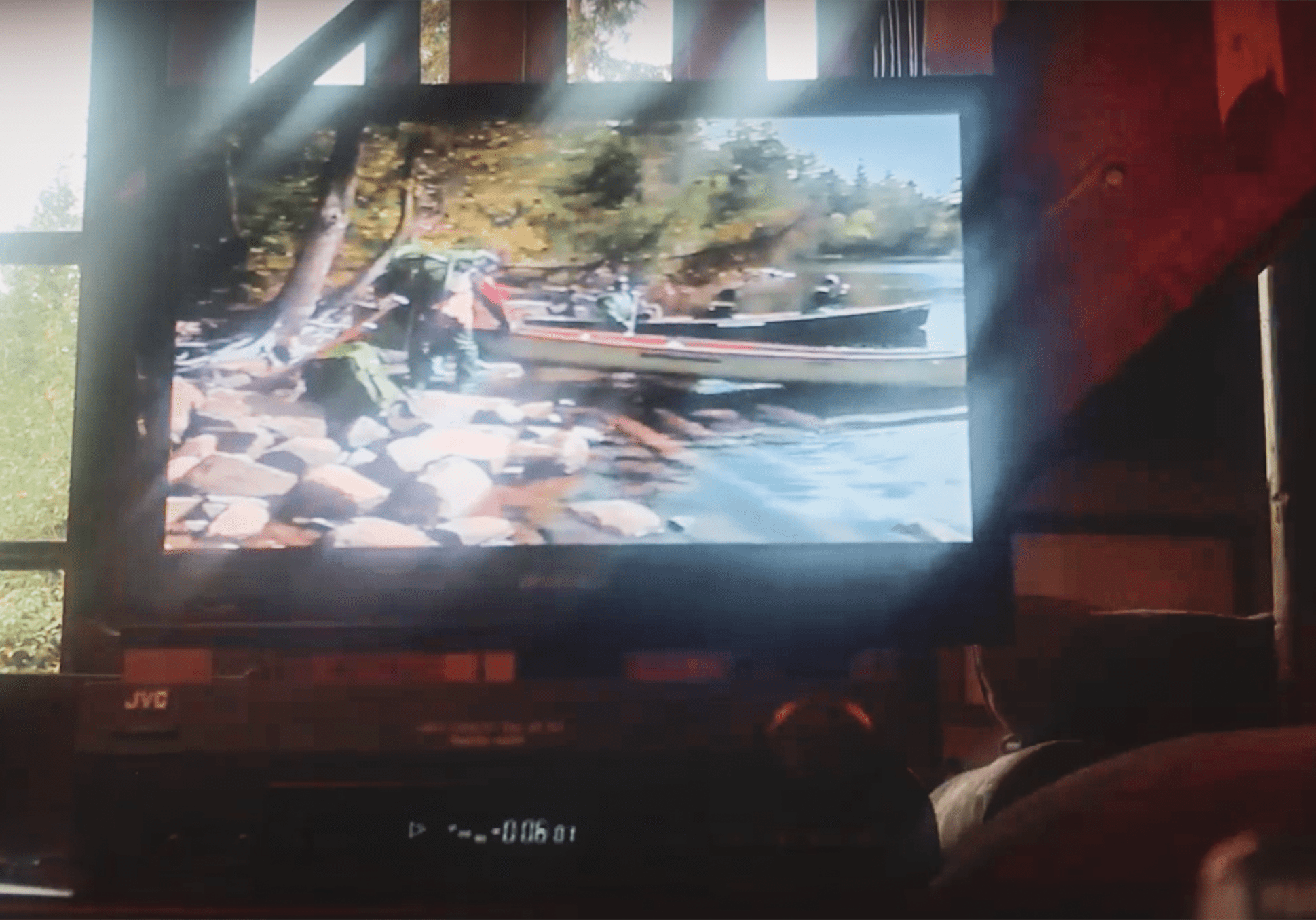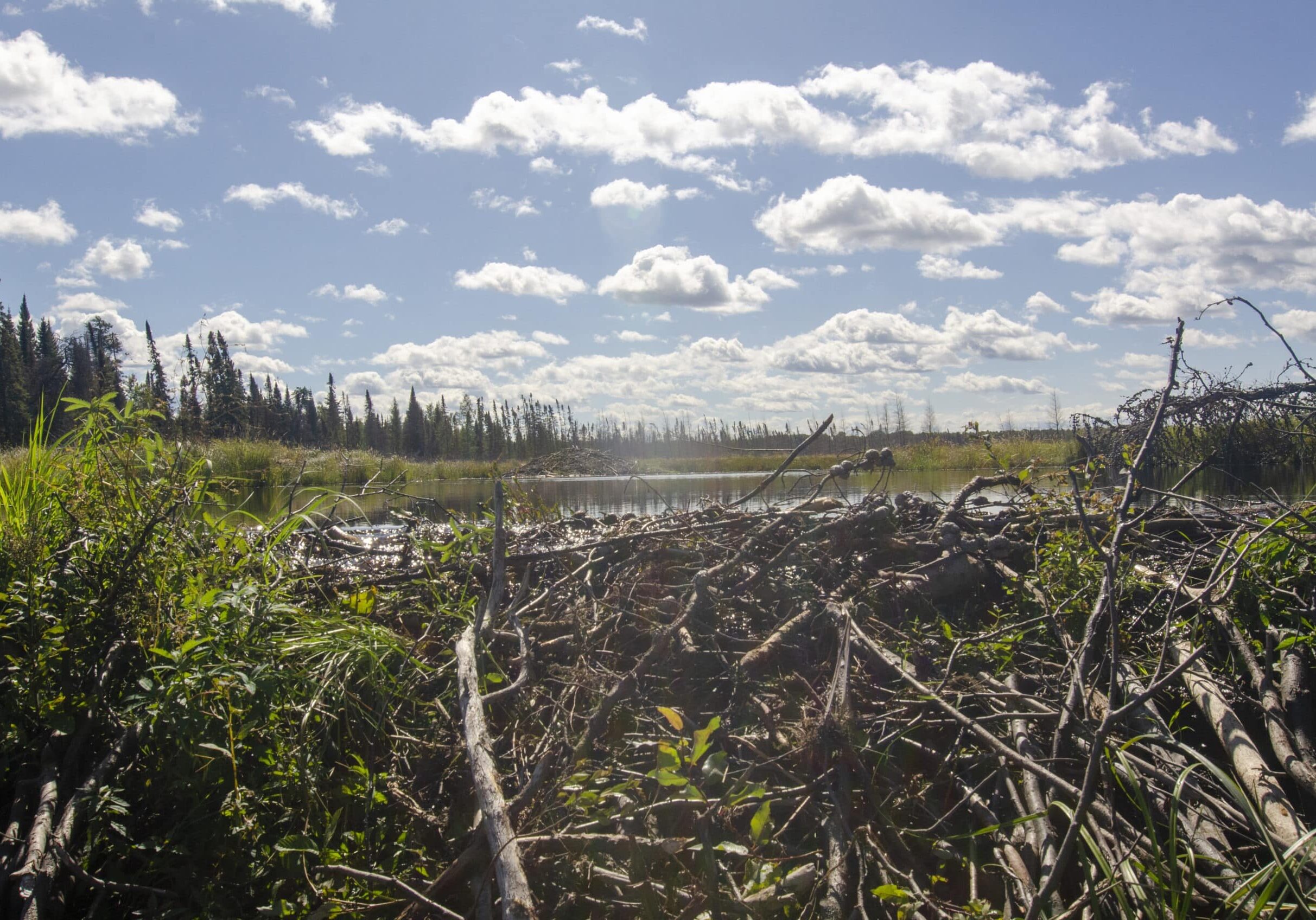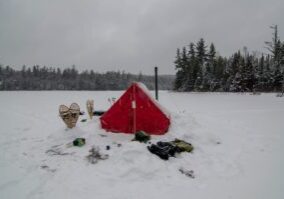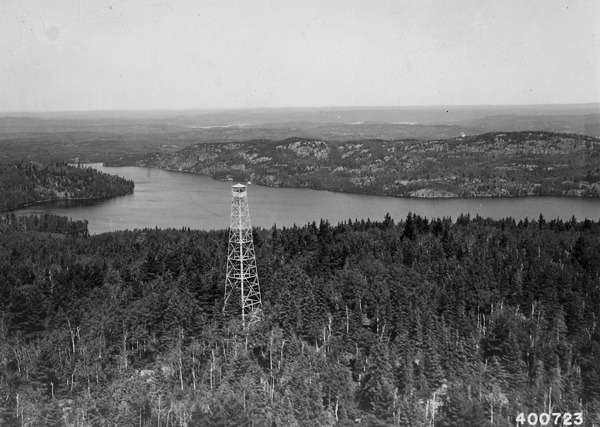
Kekekabic Lookout
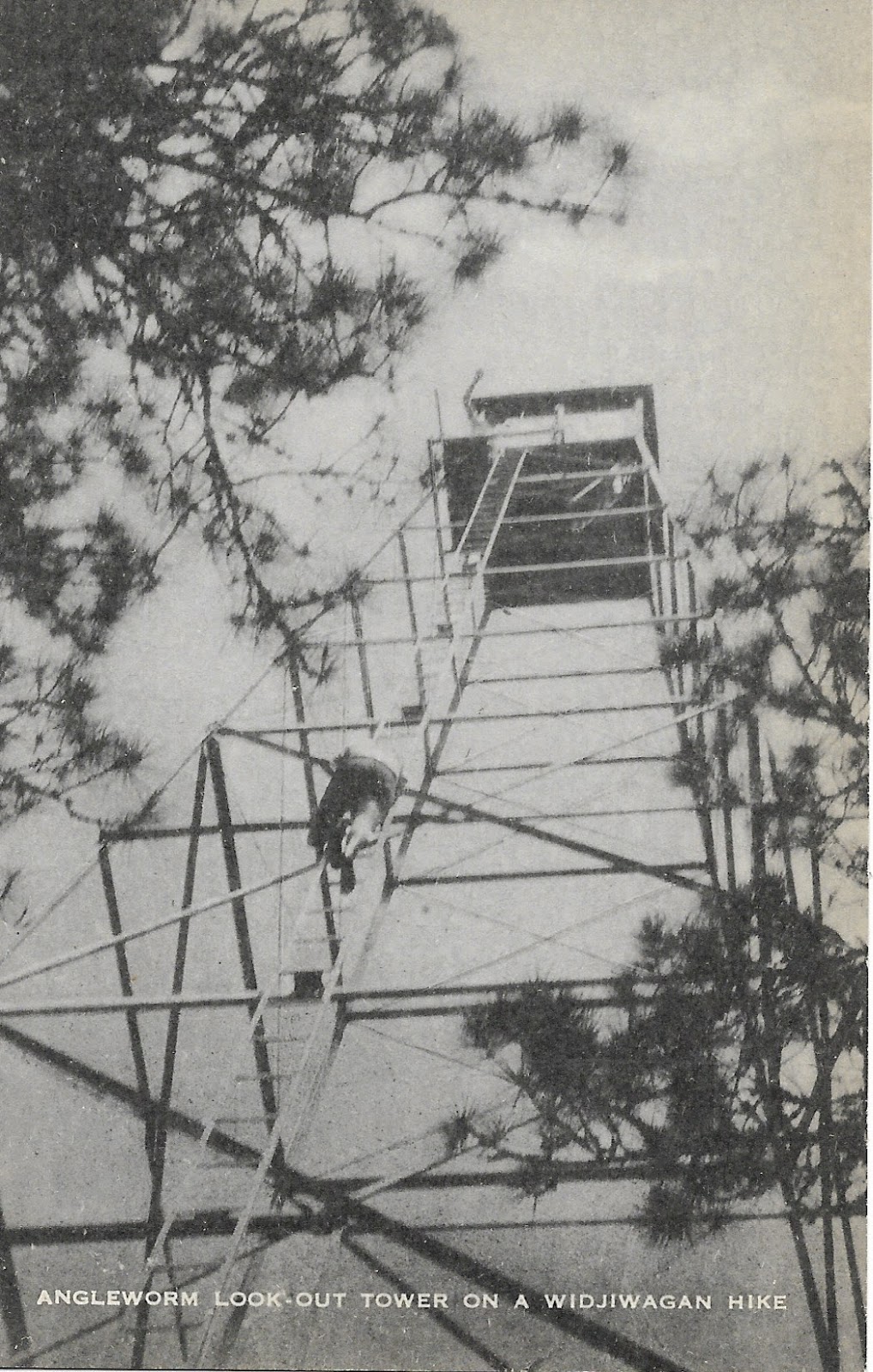
Angleworm Lookout
Slim: Unlike Angleworm or Kekekabic, other towers have very little impact on the average recreationalist, but their history is equally fascinating. When most of us think of fire towers, we imagine these soaring steel structures with a small, enclosed cab on top, and many of our local towers were built this way during the CCC era. These towers were actually just the newest generation in a series of towers with some made of steel and others which stood on timbers. The Slim Tower was a graceful if not rudimentary structure with a small “crows nest” type platform perched atop of a slender steel tower. This old tower was made obsolete by larger towers built during the CCC era and, as such, little remains of it. But, as with most manmade structures, a few remnants may be found such as footings and some cabling. And today as folks drive down Van Vac Rd to enter at Slim Lake or explore the north arm ski trails, they pass by this now-empty hill where rangers once dutifully kept watch.
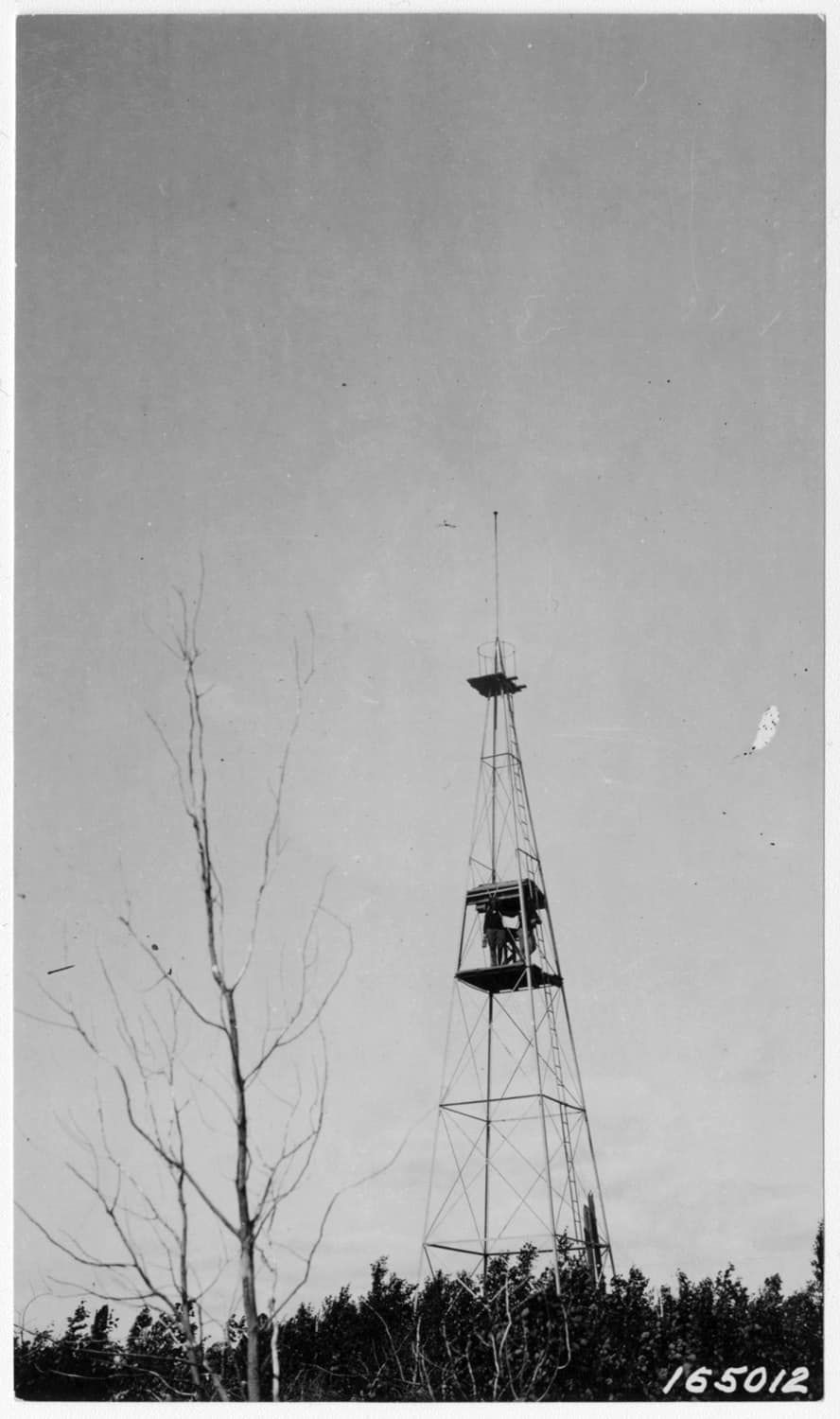
Slim Lake Lookout
In these stories of the old fire towers, though the forest is quickly reclaiming its own, we are reminded that this land has a history. And even if the average canoe tripper or backpacker today is completely unaware of it, the signs and stories of the past are still there for the finding. It’s amazing how much our Boundary Waters experience was shaped by the fire tower and ranger cabin network so that even today, fifty years after the the towers began to close, we are still following the same trails and portages cut by the rangers who used them. This little glimpse of history is, itself, a reminder that in every portage and footpath here we follow in the footsteps of the past. Whether these trails were crossed by voyageurs or native peoples, by legendary figures whose names are familiar to us or people lost to history, in venturing here we share in a piece of their legacy. Think of them on your next canoe trip. You never know what stories lay hidden just around the corner.
Sign up for our newsletter to receive updates about new articles, great deals, and information about the activities you love and the gear that makes them possible:
Have You Read Our Other Content?
10 Lost Routes in the BWCA
Warm weather in February is a dangerous thing. If it’s too warm, the mind starts wandering ahead to summer canoe adventures. Warm weather only intensifies the time spent pouring over maps both in remembering treasured trips past and scheming the ones to come. And for me, one of the things I’m looking for on the…
Map Mondays – Week 9 – Trout to Moose River South
As part of our continuing series on the “route planning game,” we are creating routes using randomly selected entry points, exit points, and number of days to create unique and fun BWCA routes. This route highlights a route across the rugged western section of the BWCA. Check it out: Total Mileage: 35.2 milesNights: 5Paddle Distance:…
In the Context of Wilderness
Earlier this week, September 3rd, was the 59th anniversary of the 1964 Wilderness Act which established the BWCAW and 53 other areas as newly defined wilderness. The Boundary Waters Canoe Area Wilderness has since gone on to become one of the most well-known and widely-beloved wilderness areas in the country. In examining the BWCAW today,…
A Wilderness of the People – The 2023 Boundary Waters Canoe Area Wilderness Situational Assessment
The June 28th USFS newsletter contained the results of a six-month-long survey with confidential feedback from 100 individuals representing a wide scope of BWCAW users, affiliated businesses, nonprofits, and managing agencies. Their survey delved deep into the complexities of managing America’s busiest, and often one of the most complicated and controversial, wilderness areas. The results…
An Expert’s Perspective on BWCA Forests
Lee Frelich, Director of The University of Minnesota Center for Forest Ecology, is one of the foremost experts on the forests of the BWCAW and the fire ecology that dictates its composition. We interviewed him to gain his invaluable insight into this incredible ecosystem, its history, and a glimpse into its future. Question 1. For…
Map Mondays – Week 12 – Little Indian North to Moose River North
As part of our continuing series on the “route planning game,” we are creating routes using randomly selected entry points, exit points, and number of days to create unique and fun BWCA routes. This route works through parts of the BWCAW’s far western end from the furthest west EP of the BWCA through big lakes…
The Twenty Greatest Rivers and Streams of the BWCA
What makes something great is often a subjective matter, one formed of comparisons and perspectives. Is it the large size? How about the incredible strength, power, or position? Is it the beauty or some other awe-inspiring attribute which draws admiration and respect. Take the Great Lakes as an example of many of these definitions. West…
Three Generations of BWCAW Rules Videos – Side by Side
It’s as ubiquitous of an experience as one can find tied to a canoe trip into the Boundary Waters, and the memories of it are deeply rooted in my childhood as they are for many who make the annual pilgrimage north to paddle the border waters of canoe country. Even now, I can close my…
Leave it to Beaver – How Beavers Change the BWCA
When I study nature, I love to learn about the superlatives. I appreciate how the tallest mountains, the biggest trees, or the oldest animals have a way to serve as ambassadors, helping people to appreciate the natural world even if they don’t understand the “nitty-gritty” science of everything. It’s with this mindset that I set…
How to Start Wilderness Winter Camping on a Budget
The wind howls around the steep rocky palisade displacing snow which softly blanketed the lichen-speckled crag the night before. The cold wind bites the face as the eyes turn upwards towards brilliant hues of pink and orange igniting the morning sky. The evening dark and long makes the dawn all the more magical. And with…

